Designing Dreams: The Unseen Work of an Apparel Studio Campaign
Find out what really goes into conceptualising and developing an apparel studio campaign, and how to maximise its potential.
Topics
🗾 Our ‘Shibui’ design principle and what it means
🧠 Building the concept and brainstorming stage
💡 The ‘Aha’ moment and taking inspiration
✏️ Working with IN-COL and the behind-the-scenes of conceptualising the campaign
📷 Managing shoot day including set-up, previews and post shoot day editing
What I love most about building campaigns is watching your product come to life in a refined and aesthetic way. Whilst the sampling stage often has the opposite affect - where your product looks relatively unfinished - campaigns are able to bring movement, lighting, editing and finesse to the final product.
We’ve shot a number of campaigns at Torsa; ranging from locations such as Crystal Palace National Sports Centre, the infamous and iconic Repton Boxing Gym in the heart of East London, and as far as the hills of Briones Regional Park in California. Today though, I’ll be discussing one of my favourite campaigns which was shot in the studio with some very talented people.
The ‘Shibui’ Campaign
You may have heard me talk about Shibui in previous articles. Essentially, Shibui (渋い) is a Japanese design principle which inspires the foundational design choices for Torsa. It refers to particular aesthetic of simple, subtle, and unobtrusive beauty. Shibui objects appear simple overall, but they include subtle details, such as textures, that balance simplicity with complexity.
This is what inspired me to create a campaign which demonstrated the concept, and highlight the product we created in a unique way, exploring the simplicity of the product, but also its complexity in equal measures.
The Concept
In order to create something which demonstrated the Shibui design principle, I had to explore ways in which this concept could be achieved. Coming up with the rough idea I could do myself, but to refine and execute it, I needed some expertise. I therefore turned to now long time collaborator IN-COL Studio. I explained the idea to them, and how I wanted to create a studio campaign which explored the design principle and the intricacies behind its meaning.
Inspiration
I first looked at some brands that I thought were creating cool studio content at the time. I personally know what I like, and therefore always find it’s best for me to own that initial research stage. I didn’t have a super clear idea in mind of the execution, only really knowing that I wanted to craft this Shibui narrative. I therefore created moodboards of brands and ideas that inspired me, some of which you can see below;
What this allowed me to do was pick out any overarching themes that came to the surface. During this stage of collating images, I am simply picking out images I like and that I am drawn to - not really specifically following a specific concept.
After reviewing the moodboards, the clear themes I saw were;
Product in isolation
Textural elements
Hanging product
When you’re reviewing concept ideas, you also have to be conscious of hard difficult something is to execute. The Sunnei rotating platform (pictured below) is incredibly cool, but realistically, not financially and logistically viable to execute for a start-up like us.
The ‘Aha’ Moment
So at this point in time, I had an idea of what I liked. I was drawn by the idea of shooting each product in isolation to let it take centre stage. It also felt shooting it in this way tied in nicely to the concept of Shibui and it’s unobtrusive beauty. Nothing is vying for attention with product shot in isolation, it’s just the product itself.
It was only, however, when I walked past a shop window in Old Bond Street that I had the aha moment for this shoot. I am sure you’re familiar but you an ‘aha’ moment is a moment of sudden realisation, inspiration, or insight. In this case, it came in the form of Italian outerwear brand Herno’s beautiful window display.
What I loved about this is it clearly allowed the product to shine. Instead of a regular hanger like the Satisfy and Sunnei examples, they used a hook and woven belt to suspend the product. It added more texture, intrigue and a different shape to hanging a product.
I wanted to go one step further though - could we take inspiration from this concept, but also rotate the product and make the campaign a moving image? I reached out to IN-COL and with the idea, and they said “Sure, why not no both still and video.”
IN-COL Work
Sometimes as a founder you can only do so much, and that’s why I always stress how important it is to work with a great team. Let’s be honest. If I were to try to figure out how to conceptualise and execute a slowly rotating product hung over a custom built plinth, suspended by a belt and hook, I’d probably spend my whole life trying to do it.
Luckily, IN-COL were daring enough to take on this project. For the still image part, we would isolate the product hanging over a plinth which was custom built from a set designer, with the addition of custom built hooks and inserts, and heavy webbing material to suspend it under a rail. The renders from IN-COL can be seen below.
Renders are renders. They never truly represent the final outcome, but it started the journey of the Shibui campaign which we would go onto refine in the coming weeks and months.
After the renders were developed, IN-COL enlisted a set-designer and friend of theirs to build a custom plinth or platform. This circular plinth (circle as a subtle nod to our Sun-as-O brand identity concept) was built to further highlight the product - almost as if we were putting the product on a pedestal. You can take a look at behind-the-scenes testing below;
By testing out different variations of how to showcase the product, we quickly agreed that the best way for the video part of the campaign, would be to suspend it by hook, much like the Herno example from the shop window display.
Much of the time, you’ll see 360° rotations done by shooting the same product at multiple angles and piecing them together in Premiere Pro for example. IN-COL, however, thought they could execute the campaign by using some sort of electronic contraption which allowed for rotation slow enough that the product would rotate smoothly (without it swaying). As the day of the shoot neared, I had full trust in IN-COL’s ability to execute the plan. When you trust people, and they are very good at what they do, you don’t have to get too involved - knowing that come shoot day, they’ll have it figured out.
Shoot Day
The day of a shoot, there are always nerves. However, arriving to the studio, I knew I was in good hands. This was a shoot that I really had little impact over in that it wasn’t a traditional studio model shoot, where I feel like I can have a positive say on what I like and what I don’t. This shoot involved a kooky concept that could only be executed by the team at IN-COL. I was simply there to observe.
Even though there was so much going on, from rigs, plinths, hooks, lighting, and multiple cameras, there was also a sense of calm - like everything was under control. A nice feeling to have as a founder. Have a look at some BTS shots from shoot day.
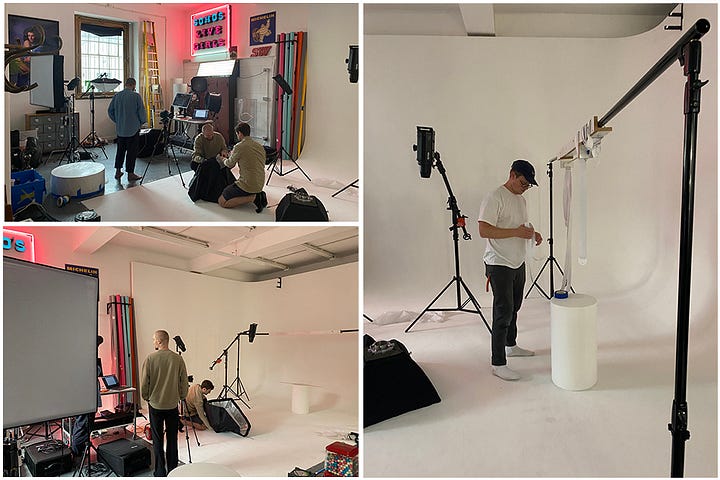
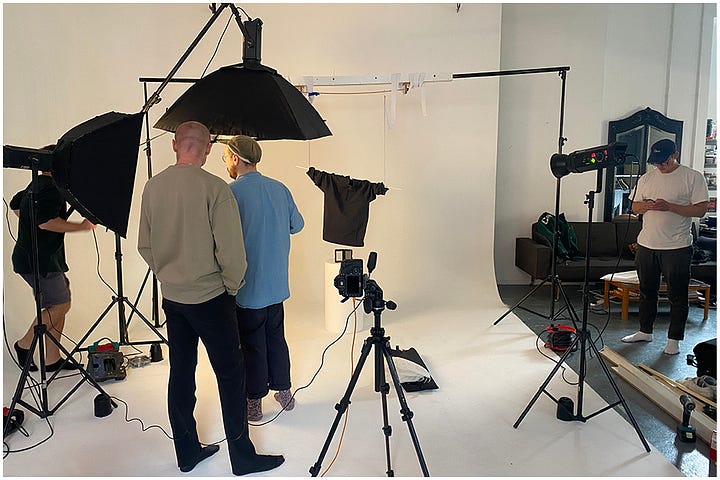

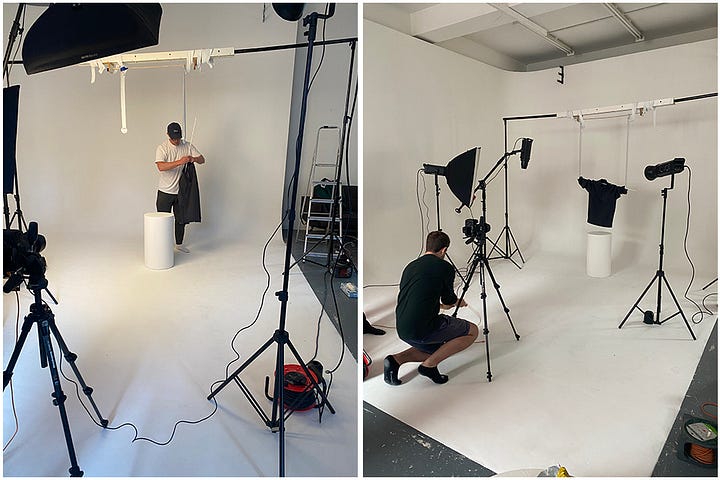
Previews
As it works on shoot days, you’re camera will be plugged into your laptop and previewed in something like Adobe Lightroom. This gives you instant feedback of how the image looks with the lighting effects, and set-up. I mention this point because this is truly the first time your image will look refined - it’s always an awesome moment to see a preview popup in Lightroom and it look exactly how you wanted.
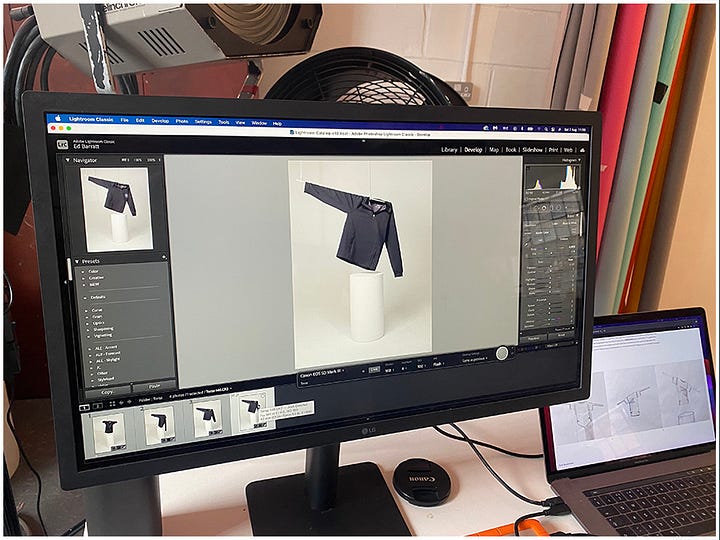
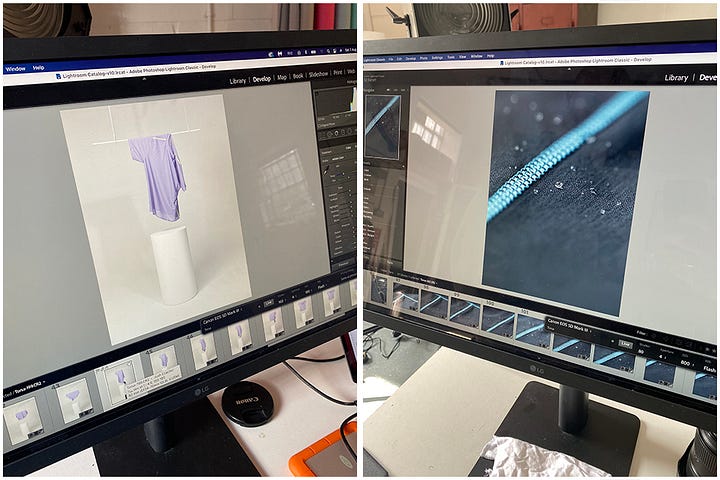
Final Result
After shoot day, it’s not over. Now comes the editing part in which you sit down with the photographer, or in my case, creative studio. There are multiple decisions to be made, some of which are logistically such as;
How and where are we going to use certain images?
Which ones didn’t make the cut?
Cropping and/or formatting them into the correct dimensions.
You’ve likely spent lots of time, money and effort in getting these images right, so you want them to have longevity. Look at ways of maximising the assets, using them across the core campaign, social, website framework, press and media packs, wholesale books, and so on.
There is also the editing of any of the assets themselves. In an example, we wanted to highlight some macro shots alongside the rotation of our signature lilac Onyx T-Shirt. This requires some Premiere Pro work, which IN-COL took care of. You can view a number of assets from our Shibui campaign below;
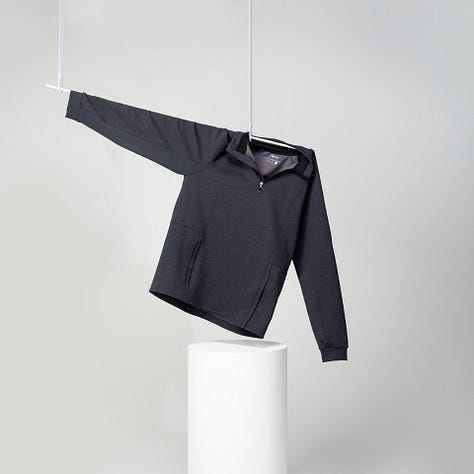
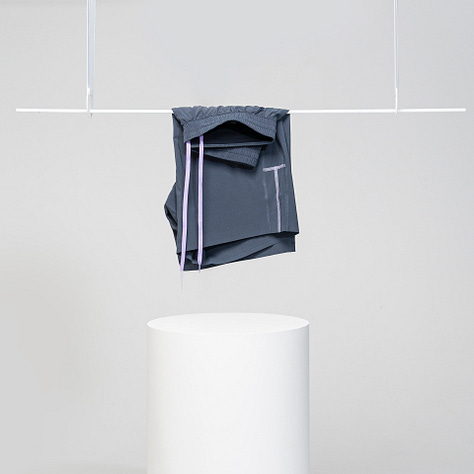
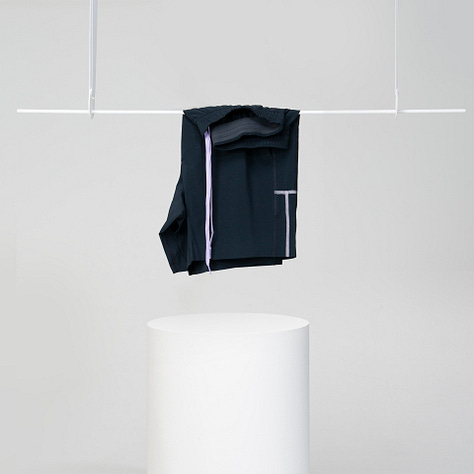
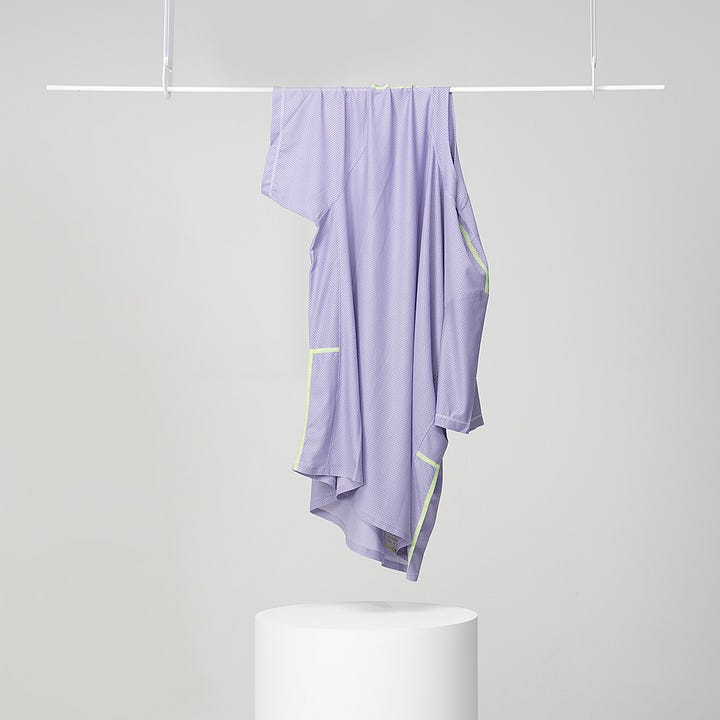
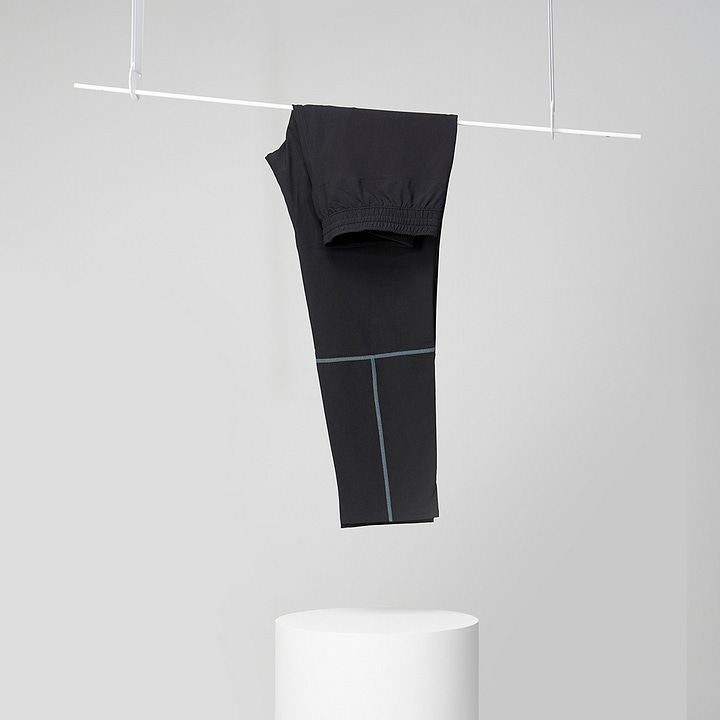
Final Thread
I’ve always found studio campaigns a unique opportunity to showcase your brands personality, ethos and vision. It’s an opportunity to be unique and different - some may argue, in a way that shooting on location doesn’t.
Shibui is an important guiding principle for our design language, and we felt this concept resonated with this principle, as well as highlighting the simplicity, craftsmanship and attention to detail of our product.
When you’re shooting a studio campaign, you have to think visually, but also commercially. You want to be clear on the vision and concept, but also what the goals are of the campaign. Are you shooting the campaign to raise brand awareness, stamp your unique identity, develop assets which can be used cross-channel, tell your story, and so on. This will help guide your campaign, ensuring it has the impact you want.









